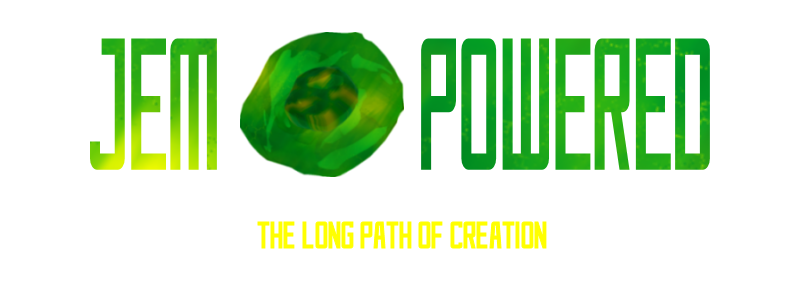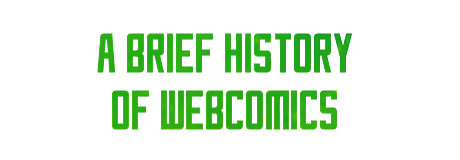
    |
|
Greetings Jem Readers!
Welcome readers. About me: I was born in South Africa. Moved to Canada in the late 90s, landing in a strange country; the sun going down at 10pm when I trying to sleep, super long periods of dark in winter and real snow instead of a little dusting once per year that melts within a few hours and of course, blizzards! Then there is hockey. Suddenly I can no longer avoid speaking English and have to stop using colloquiums, ie: calling a 2.5 inch floppy disk a "Stiffy" -- see how this can blow up in your face in high school when talking to a girl in computer class '
The other half of the calls can prove to be difficult. I never did manage to keep my Handle Time below 11 minutes. Some calls lasted 40 to 70 minutes. And oftentimes, I had jerks who insisted on speaking with an American. Thanks to Outsourcing, the odds are one in 100, in that happening. Also, the caller did not reach a call center in India. I do have a strong accent, I used to only speak Afrikaans. Guess what I transferred those calls to the Spanish department or hang up. Do not piss off your Canadian tech support guy. Now, tech support calls can be very challenging and ultimately drain away some sanity, like most jobs out there. The part of the building were we housed in, was a Dilbert style hellhole of cubicles. About 600 computers, most with a fellow tech support agent either waiting on a call, or in the middle of call. There was no windows and the Air Conditioning turned on about three times a year. Given that the outside temperature can hit 47 Celsius (117 F), heat and fresh air can be problem. Some of us write fan fiction or reading a novel, while taking calls. I took up reading webcomics: Alien Dice, Waspi Square, Customers Suck, Ctrl+Alt+Del, Oh my Gods!, Catharsis, Count your sheep, Doctor McNinja, Darwin Carmichael is going to hell, C.urvy, Pawn, Queen of Wands, Punch N Pie, Neko the kitty, and my favourites Least I Could Do, Girls with Slingshots, and The Devil's Panties. Also worth mentioning: One of my calls ended when a Flying Monkey hit me in the face. It was fired across the cubicles by a bored team leader .... I have taken a very strong liking to webcomics, since unlike printed Comic Books, its easy to find, webcomics do not go missing and you cannot spill coffee on it, my pets (three cats, one who loves to lick pages and bite the corners) cannot destroy the pages. I started reading webcomics since I discovered "Blood and Water" by Jennie Breeden on Vampire Rave. It is an addiction, something that was not not unique to me. I may end up reading webcomics for hours at a time if I not mindful of the time. If I don't, I will start hearing birds singing followed by the sun rising. A few years later, very boring job. I used that time to plan a science fiction webcomic. Not enough people is working to stop brainwashing the children. While brainwashing the children is nothing new, but now in Kamloops, is a half baked Communist teachers setting up children to fail in life. These kids alot has a crippled and imcomplete knowledge of what sex is. Funny thing is I learned 90% of about sex is by watching the Discovery Channel. I even encounter young adults who cannot say words to do with sex and willing to speak the name of body parts. Borrowed from The Devil's Panties by Jennie Breeden:
STORY
The world of comics is divided between DC Comics, Marvel, many smaller publishers and Indie comics. Marvel Comics and DC Comics re-launched their comics in recent years, revamping their casts of characters in recent years to pull in the new and younger generation of readers. When a movie based on a comic book is released (several Comic Book movies are released every year), more interest will be paid to webcomics along with comic books and graphic novels, if attention can be drawn towards webcomics. Anyone who saw the last X-Men, The Avengers and DC comic movies is a potential buyer of other comic books, related merchandise and webcomics. Both DC and Marvel have launched successful TV series as well. Comic book series like 'The Walking Dead', 'Saga', and 'Pretty Deadlyhave gotten the attention of the girls and women. PHANTOM OF THE ATTIC Comic Book Specialty Store have noticed there are "a lot of young women who are really invested in Marvel and DC titles, as well as independent comics. Brian Hibbsmarket analysis of US bookscan (around 70% of that market) shows 6 million sales on average for the top 750 comic books. The Walking Dead sold 3 million copies of their volumes before the TV show aired, that number can only climb as The Walking Dead ramps up towards Season 7 and 8. After Emerald City Comicon's doors were closed for the weekend in May 2014, it asked its attendees to fill out a survey about the event, to see what worked, what didn't work, and what they can do better or more of. The results: More than half of survey takers were female.
Webcomics as a medium is fairly new. The first webcomic began in 1985 ("Witches and Stitches"), but the medium didn't really take off until 1993. As internet speeds improved from the 1990s, more people discovered webcomics. The world of webcomics has a wide variety of genres, from action-adventure, journal comics based on the creator's real life events (autobiography and semi-autobiography), fantasy, cute / chibi, punk visual art, feminist, surreal, steampunk, video games, video game worlds, science fiction, historical, military, satire, supernatural, religion, mythology/folklore, counterculture, political, young adult, non fiction, paranormal, thriller, mystery, comedy, horror, alternative time lines, romance, Sex Ed, and erotica. Webcomics is home on the internet, so it has complete freedom in content. Compare this to what you would see in a newspaper or a typical comic book. Rather than being mired in nearly a century of censorship or watered-down adventure, the best webcomics known to today's audience is edgier. Webcomics has unlimited venues of growth since no one can censor it. The artists and writers decide what happens in their webcomic. Webcomics will see always be the light of day, instead of being filtered out by an editor and censored. Personally, I really hate censorship. I would want to work on a canvas without limitations. As inspiration, I look to ReBoot. Season 1 and 2 was heavily censored and crippled by the censorship of ABC and YTV. Season 3 and 4 was amazing, as the censorship was now gone. ReBoot grew up in the last episodes of Season 2. Seasons 3 and 4 knocked my socks off. I was pleased with the action and the character growth. A partial History of comic books
During this time period, women who were not superheroes were primarily portrayed three ways: as career girls, romance-story heroines, or perky teenagers. Career-oriented girls included such characters as Nellie the Nurse, Tessie the Typist, and Millie the Model, each of whom appeared in comic books geared toward female readers using the types of jobs that women of the era typically worked. The second role was evident in the very popular romance genre, pioneered by Joe Simon and Jack Kirby. A woman in those stories could be the good girl or the bad girl. A good girl gets her heart broken while the bad girl breaks all the boyshearts. The third role was as a perky teenager. This is embodied by characters such as those in titles such as Betty and Veronica. The lead characters were both boy-crazed and completely fun-loving teenagers. Betty and Veronica spent all their time fighting over who would get to date Archie. Josie and the Pussycats, always managed to find their way into some sort of adventure but emerged unscathed. Super powered heroes like Superman and Captain Marvel dominated the stage while women scarcely made any presence during the early years of comics. Specifically, they were depicted as dependent and 'damsels in distressvictims that needed to be rescued by the male protagonist; a prize that needed to be won by either the male villain or hero. For example, in the first issue of Superman, news reporter and future love interest, Lois Lane, is kidnapped by criminals and eventually rescued by Superman. No relationship gets developed and nothing else is learned about who Lois is Superman simply saves her, flies her to safety, and then flies away. Women were also portrayed as the 'girl-Friday ... seductive vamp, or perhaps, the long-suffering girlfriend (Lavin, 1998). Comics were aimed at teenaged boys. The role of women changed dramatically during World War 2 when patriotic characters emerged and surprisingly attracted the interest of new readers, both male and female. The World War 2 had a profound effect on the Golden Age. Comic books became known as cheap and portable sources of entertainment, with good triumphing over evil. Captain Midnight debuted in 1938, depicting women who were treated as equals, not just characters waiting to be rescued. Joyce Ryan of the Secret Squadron and Fury Shark, daughter of villain Ivan Shark, pulled their own weight in the adventures. Joyce went on commando raids and became involved in aerial dogfights during World War II. Red Tornado saw her debut in 1939. Abigail "Ma" Hunkel was a working-class mother turned to crime-fighting with a make-shift costume. The bucket worn over her head helps conceal her identity and make most criminals think she's a man, due to her surprising strength. Her side-kicks were the Cyclone Kids, and her grand-daughter went on to become Cyclone. Arguably, the most noteworthy character was Wonder Woman. Introduced in 1941, she possesses enormous super-human strength, has the ability to fly, and can overcome any obstacle that comes in her way. Even more interesting is how her love interest, Colonel Trevor, is constantly being rescued by her, as if he is the male version of the Lois Lane. Rather than the male rescuing the female all the time, it was reversed in the Wonder Woman comics. In the following years, other strong and super heroine characters surfaced like Miss America the female version of Captain America Mary Marvel, Super Girl, She-Hulk, and many others. They carried the symbolic message that 'girls could do anything boys could do, and often better, especially if they stuck together(Robbins, 2002). At the end of World War 2, more girls were reading comics than boys and new strong female superheroes were introduced. Then come Senator Joseph R. McCarthy's political witch hunt. The Comics Magazine Association of America was formed in response to a widespread public concern over gory and horrific comic-book content and hunting for Communists in Hollywood and Academia. A self-policing "code of ethics and standards" was created for the comic book industry in 1954. As a result; Powerful and independent female characters were erased by the introduction of the Comics Code Authority, lasting nearly 30 years. In the aftermath, superheroes each had a major female supporting character. These included two career women: journalist Lois Lane, who worked at The Daily Planet with Superman's alter ego, Clark Kent. Batman's supporting cast occasionally included heiress Kathy Kane, whose alter ego was the masked crimefighter Batwoman. Batwoman used 'girly weapons including powder puffs, charm bracelets, perfume, a hair net, a compact mirror, and a shoulder bag utility case. When Atlas Comics became Marvel Comics in 1961, many brand new women superheroes were introduced and given supporting roles. The first female superhero from Marvel Comics was the Invisible Girl, aka Susan Storm, charter member of the Fantastic Four.
Some of the worst comic book story arcs involved Ms. Marvel is an example of Marvel's struggle with the issues of feminism. Debuting in 1977 at the height of the women's liberation movement , with the honorific "Ms. " part of her cryptonym , the heroine's name was a strong symbol of feminist solidarity, as was her civilian job as editor of Woman magazine (a reference to the then-new Ms. Magazine ). The first couple of issues of her self-titled comic book even included the cover line "This Female Fights Back!" The reality, however, was decidedly mixed. The controversial Ms. Marvel rape was handled poorly by Marvel Comics: first having Ms. Marvel be the victim to a man's attempt of escape from Limbo, give birth to said man that raped her, her teammates confused as to why she would not want the child, and subsequently fall in love with him and move into Limbo with him. Not all hope is lost.
In the 1980s, under writer-artist John Byrne, Susan Richards found new uses for her powers and developed an assertive self-confidence to use her powers more aggressively. She changed her alias from the Invisible Girl to the Invisible Woman. Eventually, the Invisible Woman would chair the Fantastic Four, while Wasp (Janet van Dyne) chaired the Avengers team. Amanda Waller, leader of the Suicide Squad was introduced in 1986. She is not only the toughest woman in comics, she's bar-none one of the toughest characters in comics. Waller has no super-powers save for utter cunning ruthlessness hard enough to boss around a group of hardened super-villains into going on suicide missions for the Government, when Batman comes to shut down the operation that's pardoning super-criminals, she's one of the few characters to stand up to DC's ultimate badass in a battle of wills ... and win. Amanda Waller is a force of nature. Despite the introduction of strong superheroines, their male counterparts still outnumber them and typically comics are still aimed at the male demographic. Video games has been reinforcing the idea of superheroes and games is for boys due to Nintendo's decision in the 1980s after the video game collapse, moving video games from the electronics section to the Toy isle for boys. This shifted the idea that video games and superheroes are for boys. And not girls.
So here ends the ABOUT (a BOOT) part of Jem Powered. |
 |



